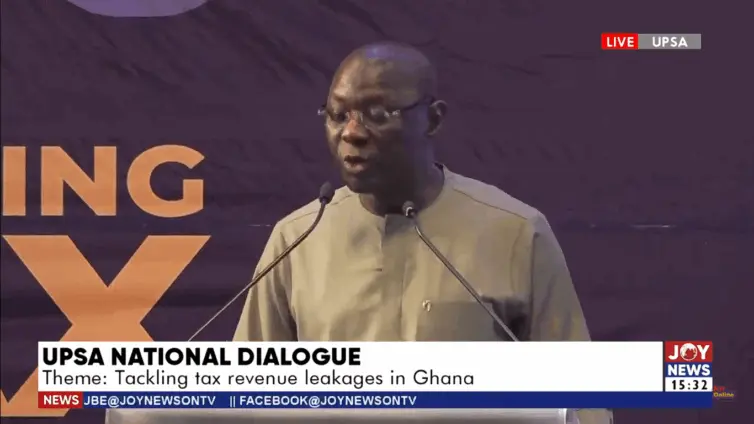Accra, Ghana – On May 23, 2025, the Ghanaian government will test the waters of the treasury market, seeking to borrow GH¢5.55 billion through the issuance of 91-day, 182-day, and 364-day Treasury bills (T-bills). This borrowing initiative is primarily aimed at settling maturing bills, which stand at GH¢5.35 billion. However, this operation unfolds against a backdrop of declining demand for these short-term instruments, a trend that has caught the attention of financial analysts and observers alike. The success of this Ghana T-bill auction will be a key indicator of investor confidence and the government’s ability to manage its short-term debt obligations.
The upcoming auction is a routine, yet critical, exercise in Ghana’s financial management. The government regularly issues these short-term debt instruments to finance its operations and manage its cash flow. The specific bills on offer – 91-day, 182-day and 364-day – cater to investors with varying time horizons and risk appetites. However, the current environment presents some challenges.
The primary objective of the GH¢5.55 billion Ghana T-bill auction is straightforward: to raise funds to cover maturing obligations. The issuance includes the usual mix of 91-day, 182-day, and 364-day bills, offering investors a range of options based on their liquidity preferences and investment strategies. These bills are a cornerstone of Ghana’s domestic debt market, providing a relatively low-risk avenue for investors to deploy capital, while simultaneously enabling the government to finance its short-term needs.
However, recent auctions have revealed a concerning trend: declining demand for these short-term instruments. This trend is marked by consecutive missed targets, signaling a potential shift in investor sentiment or a broader reassessment of risk and return in the Ghanaian financial landscape. Last week’s auction vividly illustrates this point. Against a target of GH¢6.68 billion, with maturities looming at GH¢6.44 billion, the government managed to accept only GH¢2.76 billion from the GH¢5.35 billion in bids submitted. This significant shortfall underscores the challenges the government faces in attracting sufficient investor interest in its short-term debt offerings.
Adding to the complexity, yields on the 91-day, 182-day, and 364-day bills have been decreasing week-on-week. This yield compression could be interpreted in several ways. It might reflect a perception of reduced risk, potentially driven by positive macroeconomic indicators or policy announcements. Alternatively, it could indicate investor hesitation, with investors demanding higher yields to compensate for perceived risks associated with investing in Ghanaian government debt. Whatever the underlying cause, this yield compression adds another layer of intricacy to the upcoming auction.
Databank Research, a leading financial analysis firm in Ghana, offers valuable insights into the dynamics influencing the Ghana T-bill auction. Their analysis suggests that the Treasury’s decision to selectively accept bids reflects a calculated effort to manage upward pressure on yields amidst tightening liquidity in the market. In other words, the government is deliberately forgoing some potential borrowing to avoid signaling distress or accepting excessively high interest rates.
Furthermore, Databank Research points to a growing preference among institutional investors for the Bank of Ghana’s (BoG) 56-day bill. This shorter-term instrument appears to be gaining traction, with a recent auction raising GH¢10.9 billion. This shift in investor preference could be attributed to a variety of factors, including a desire for greater liquidity, a more favorable yield profile, or a reassessment of risk-return tradeoffs in the current economic environment.
“We believe the Treasury’s selective acceptance reflects a deliberate effort to contain upward yield pressure despite tightening liquidity…” – Databank Research
Another key factor highlighted by Databank Research is the segment-specific yield curve inversion between the 56-day and 364-day bills. This inversion, where shorter-term instruments offer higher yields than longer-term ones, is expected to persist as the Monetary Policy Committee (MPC) is likely to maintain the Monetary Policy Rate (MPR) at 28%. The MPC’s cautious stance, reflected in its decision to hold the MPR steady, stems from concerns about a slight uptick in April’s month-on-month inflation. This wait-and-see approach underscores the delicate balance the central bank is attempting to strike between controlling inflation and supporting economic growth.
Looking ahead, analysts anticipate a continued modest uptake in the near term for Ghana T-bill auctions. This subdued demand is likely to exert further downward pressure on yields, leading to continued yield compression across the maturity spectrum. The implications of this trend are significant. Reduced demand for T-bills could potentially affect the government’s ability to raise funds efficiently and manage its debt obligations effectively. It may also necessitate a re-evaluation of the government’s borrowing strategy, potentially leading to a greater reliance on alternative sources of financing or a recalibration of its fiscal policies.
The upcoming Ghana T-bill auction on May 23, 2025, is more than just a routine exercise in government finance. It is a crucial barometer of investor sentiment, a test of the government’s ability to manage its debt obligations, and a window into the broader dynamics shaping Ghana’s financial landscape. Monitoring these trends and adapting strategies will be essential for both the government and investors as they navigate the complexities of the Ghanaian financial markets.
Image Source: MYJOYONLINE




















